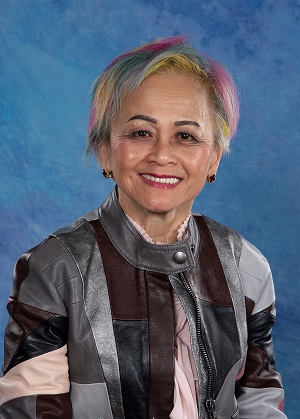Interview with Durhane Wong-Rieger, PhD, President & CEO, Canadian Organization for Rare Disorders and Chair, Rare Disease International

© Dr Durhane Wong-Rieger
Dr Wong-Rieger, what was the idea behind your strategy and what was the starting point?
Before we, as the Canadian Organization for Rare Disorders, could bring people together to consider a national “rare disease strategy”, we had to answer the question, “what do rare diseases have in common?” What could we possibly offer patients and parents, most of whom were struggling to cope with their own rare disease and many who were leading their own organizations and support groups?
How did you put your idea into practice?
What became clear was that we needed a much broader coalition, including clinicians, researchers, policy makers, and private industry. And to create policy change, we needed data on the burden of rare disease, we needed best practices, we needed models of national strategies, and most of all we needed a process for engagement. So, our first big success was bringing all stakeholders together under the rare disease patient umbrella.
Which challenges did you face?
The biggest challenge was gaining consensus on the core elements. We settled on five which seemingly included everyone: diagnosis (early detection and prevention), expert care (specialist and centre of expertise), community support (patient group and community), treatment (drugs and other interventions), and research.
Which changes did you achieve?
The Rare Disease Strategy has provided patient groups and other stakeholders to advocate for policy change, funding, and initiatives. For example, in 2016, all Health Ministers agreed to a core group of 26 rare diseases to be included newborn screening across all provinces and territories. In 2016, the largest province (Ontario) agreed to implement a Rare Disease Strategy and set up an Expert Working Group (including patient representatives) to conduct a “gaps analysis” of the status quo, make recommendations for genetic testing, centres of expertise, and a rare disease registry (database).
The capacity for Rare Disease research has been significantly enhanced by a various funding programs under the Canadian Institutes for Health Research, primarily through the Institute of Genetics. Over the past year, Genome Canada and CIHR have set up a pilot program to accelerate diagnosis, including sites for genomic sequencing of rare diseases to support clinical care. Upon completion, this program will be accessible to everyone across Canada, leading to the development of a nationwide genomic database (linked to phenotypic and other patient information).
With continued advocacy by the patient community and support of the pharmaceutical industry, the Canadian governments have taken three big steps in treatment access. First, in November 2018, the governmental Working Group on Expensive Drugs for Rare Diseases announced a unique pathway for rare disease drugs. These are often approved with short clinical trials and small sample sizes, hence marketed with considerable “uncertainty” as to long-term benefits and risks. The proposed pathway sets up “managed access” programs so promising drugs can be made available upon regulatory approved and monitored for long-term value. Second, a new Pharmacare model proposed a single national plan for rare disease drugs, bringing together all of the current public and private plans to assure nationwide standards for access. The third and most surprising announcement was the federal governmental allocation of one billion dollars ($1bn) to set up a Rare Disease Drug Strategy and Program, with guaranteed investment of an additional $500 million every year.
As we move toward the 5th anniversary of the launch of Canada’s Rare Disease Strategy, we realize there have been many advances in diagnosis, care, treatment access, and research, but we are even more cognizant of how far we have to go to meet patient needs.
Along the way, we note that Canada is recognized as one of the leading contributors to the international rare disease landscape. We are active contributing partners in international consortia, committees, and organizations in all areas including research, treatment access, and policy.
This interview was independently submitted by Durhane Wong-Rieger, PhD.
President & CEO, Canadian Organization for Rare Disorders and Chair, Rare Disease International
Rare Disease Corporate Partner: Sanofi Genzyme

